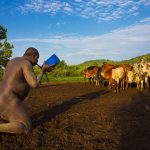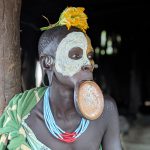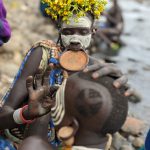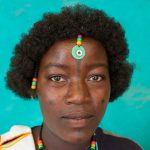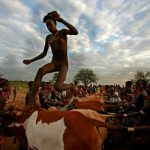Omo Valley: The Origin of Humanity
January 13, 2022
You’ve probably been all over the world, and each nation has its unique set of customs and traditions. However, only in the Omo Valley, and nowhere else in the cosmos, do so many genetically and linguistically different people continue to practice an old way of life.
Men, women, and children in this region ritually beautify themselves to demonstrate status and tribal identity by peircing their lower lips to fit a 10 cm diameter lipplate, shaping their hair with animal fat and clay, knocking down lower teeth for beauty, scarifying limbs, and donning tribal regalia. Simple yet eye-catching: bright necklaces, hefty metal rings and armlets, glossy nails affixed to beaded, bone, and metal skirts, and girls adorn themselves with seasonal flowers and paint their entire bodies with distinctive nature-inspired designs of white minerals and red and yellow ocher.
The Omo River flows 470 kilometers south from its headwaters at Showa Mountain, first through a high, impassable valley before slowing as it enters the lowlands and then rambling through flat, semi-desert vegetation. Where it provides a living for thousands of Omo nomads, growers, and hunters who continue to live traditional lives. Along the river are indigenous tribes such as the Karo tribe, the Mursi tribe, the Bodi tribe, the Nyangatom tribe, and the Dasasnch tribe. Other tribes, such as the Arbore, Suri, and Hamar, dwell further from the river yet have an inter-Ethnic allice system.
Apart from its interesting culture, history, and scenic appeal, the Omo River valley is crucial in the study of human development. It was a crossroads for mankind when climate changes permitted branches of the ancient population to move from the horn of Africa around the globe between 60,000 and 120,000 years ago. Paleontologists have discovered the oldest known remains of anatomically modern humans, who hunted and gathered here an astonishing 200,000 years ago, DNA analysis suggests that every person now living is related to a single tribeswoman from the Omo River valley, and it is said that if Africa is humanity’s womb, the Omo River valley in Ethiopia is its umbilical cord.
